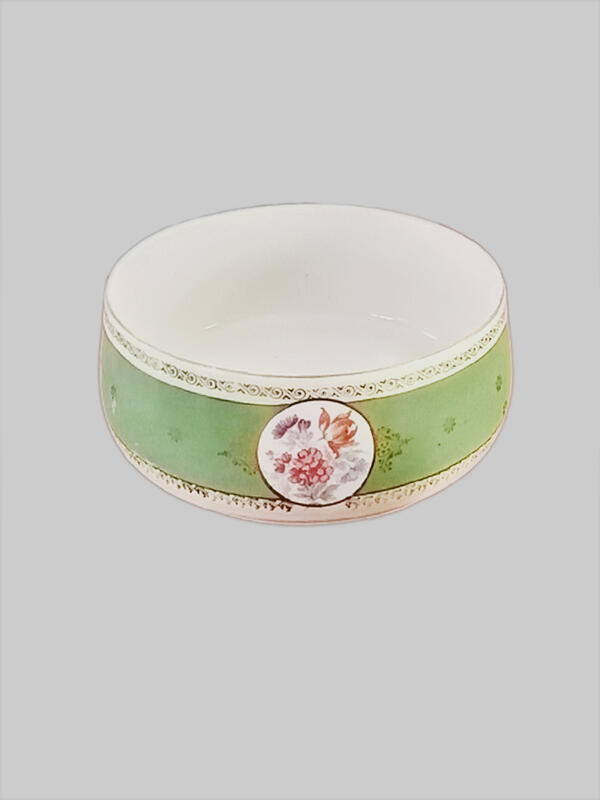In the large sitting room, on a sophisticated ‘Thonet’ style coffee table, there is a set of tableware without which a Russian noble nest at the turn of the 20th century is hard to imagine. This is a complete porcelain china set that includes cups, saucers, a small milk pitcher, sugar bowl, candy bowl. It is made in gentle light green tones, plant and figured ornaments in its design are used simultaneously with golden borders and pastoral female portraits in the spirit of romantic painting of the 19th century.
The candy bowl in this set is the largest item. At the beginning of the 20th century, it could easily be filled to the top with a variety of confectionery products produced in the Russian Empire. At that time there were over 1000 factories throughout the country alone, producing chocolate products, 200 of them located in Moscow, and 170 in the capital of St. Petersburg. And this is not counting confectionery giants like the A.I. Abrikosov’s sons (in the USSR it will become a factory named after Babaev) and the Einem Comradeship (would later become Red October).
This china was produced by the renowned Comradeship for producing M.S. Kuznetsova porcelain and faience products. In the history of Russian decorative and applied art, porcelain and faience of the Kuznetsov Comradeship only recently that they received a well-deserved appreciation and were honored the status of antiques. The fact is that comradeship dishes in the 19th century were primarily a commodity of mass consumption. Accordingly, decorations and paintings were made by stamping, often eclectic and overly variegated. This can be seen especially clearly in Gardner factory paintings near Moscow, where new painting concepts were often applied to already outdated forms. Such blunders gave rise to a disapproving attitude towards the products of the entire Partnership, and even gave it the offensive nickname “Kuznetsovshchina”: as tasteless things were often referred to.
Nevertheless, Kuznetsov porcelain was a large international brand at the turn of the 20th century. In 1889 and 1890 the Partnership was awarded gold medals at several international exhibitions, and in 1903 in Reims and later in 1905 in Liege it was honored with the Grand Prix.
The candy bowl in this set is the largest item. At the beginning of the 20th century, it could easily be filled to the top with a variety of confectionery products produced in the Russian Empire. At that time there were over 1000 factories throughout the country alone, producing chocolate products, 200 of them located in Moscow, and 170 in the capital of St. Petersburg. And this is not counting confectionery giants like the A.I. Abrikosov’s sons (in the USSR it will become a factory named after Babaev) and the Einem Comradeship (would later become Red October).
This china was produced by the renowned Comradeship for producing M.S. Kuznetsova porcelain and faience products. In the history of Russian decorative and applied art, porcelain and faience of the Kuznetsov Comradeship only recently that they received a well-deserved appreciation and were honored the status of antiques. The fact is that comradeship dishes in the 19th century were primarily a commodity of mass consumption. Accordingly, decorations and paintings were made by stamping, often eclectic and overly variegated. This can be seen especially clearly in Gardner factory paintings near Moscow, where new painting concepts were often applied to already outdated forms. Such blunders gave rise to a disapproving attitude towards the products of the entire Partnership, and even gave it the offensive nickname “Kuznetsovshchina”: as tasteless things were often referred to.
Nevertheless, Kuznetsov porcelain was a large international brand at the turn of the 20th century. In 1889 and 1890 the Partnership was awarded gold medals at several international exhibitions, and in 1903 in Reims and later in 1905 in Liege it was honored with the Grand Prix.


